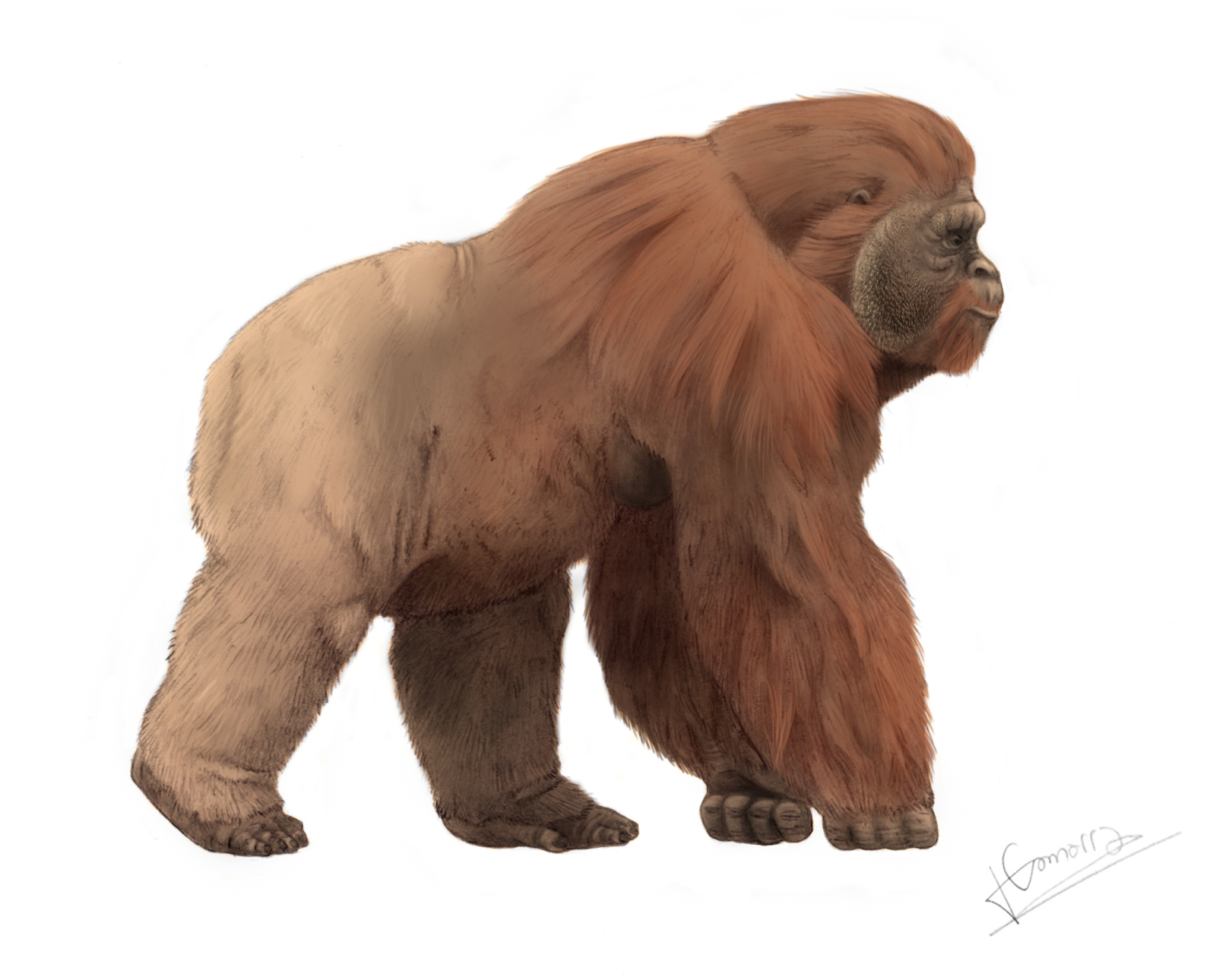Naming Some Extinct Animals in Sanskrit
Naming Some Extinct Animals in Sanskrit
What type of taxonomy enthusiast would I be if I didn't reder any extinct animal names into Sanskrit? I am going to discuss guidelines I made that will help us in naming extinct animals. These guidelines should streamline the process of translating so many extinct animal names into Sanskrit.
These guidelines are in the form of words that serve "prefixes" and "suffixes" that describe the animal. Below is the list:
भीम (bhIma) - terrible, mighty, large, buff, etc.
The word भीम will be used to denote an animal that is buff or mighty looking. This is inspired from how "gorilla" is भीमवानर, meaning "mighty monkey/ape".
भूरि (bhUri) - mighty, large, etc. [but secondary to भीम (bhIma)]
The word भूरि will be used to like भीम, but it will have a secondary importance in terms of might or largeness.. So for an ape that is slightly less mighty looking than a gorilla, this would be used.
घोर (ghora) - suffix for dinosaurs, refer to ferocious dinosaurs
For ferocious dinosaurs like T-rex or Spinousaurus, this mught be used. I don;t have to use it, but if I want t save syllable count, I might use it. This is a prefix like word that is used only for dinosaurs.
महत्तम (mahattama)- largest, greatest; refers to largest species of the a given taxa.
For animals that are the largest species with in their taxa, this will be used. So if I want to name the the elephant bird, the largest bird ever, then I would use this. If I want to name the largest giraffe ever, I would use this. This is to be used like a prefix.
मकर (makara)- legendary water monster. But now repurposed as a suffix for any “ferocious” looking sea creature
A makara is a legendary water creature that is a compostie of crocodile, peacock, elephant, etc. The word may have orignally meant crocodile and then got conflated with the Ganges River Dolphin, causing it to become a legnedary creature. The word still is sometimes used to mean crocodile, but in my taxonomy system, I refrained from using this word to mean crocodile as it has a became legendary animal.
But now I have repurpossed this word to refer to ferocious water creatures like teh Mosasaurs, Bassilosaurs, Ichthyosaurs, Plesiosaurs, etc. The only exception is that I will use ti to refer to the Ganges River Dolphin as the the makara may have been inspired from that creature as well
I am not sure whther this word should be used like a prefix or like a suffix.
Examples:
[h]
Image Sources:
a) Thomas Quine, Woolly mammoth model Royal BC Museum in Victoria, CC BY 2.0
b) Sergiodlarosa, Mammut americanum Sergiodlarosa, CC BY-SA 3.0
c) https://en.wikipedia.org/wiki/Gomphothere#/media/File:Knight_Gomphotherium.jpg
d) ABelov2014 (https://abelov2014.deviantart.com/), Paraceratherium transouralicum, CC BY-SA 3.0
e) https://en.wikipedia.org/wiki/Toxodon#/media/File:Toxodon_platensis.jpg
f) Arent derivative work: WolfmanSF (talk), Glyptodon-1, CC BY-SA 3.0
g) Nobu Tamura email:nobu.tamura@yahoo.com http://spinops.blogspot.com/, Megatherium NT small, CC BY-SA 4.0
h) Concavenator, Gigantopithecus, CC BY-SA 4.0



Comments
Post a Comment